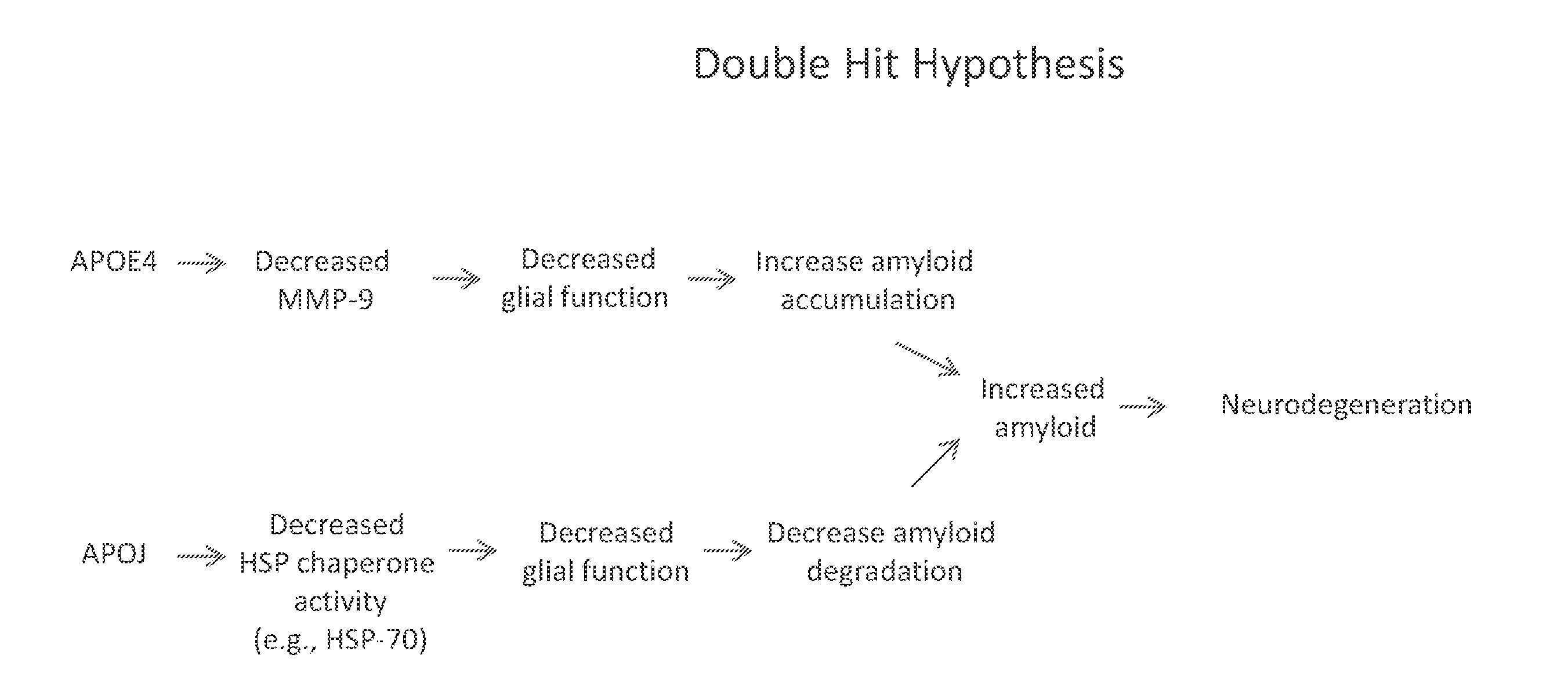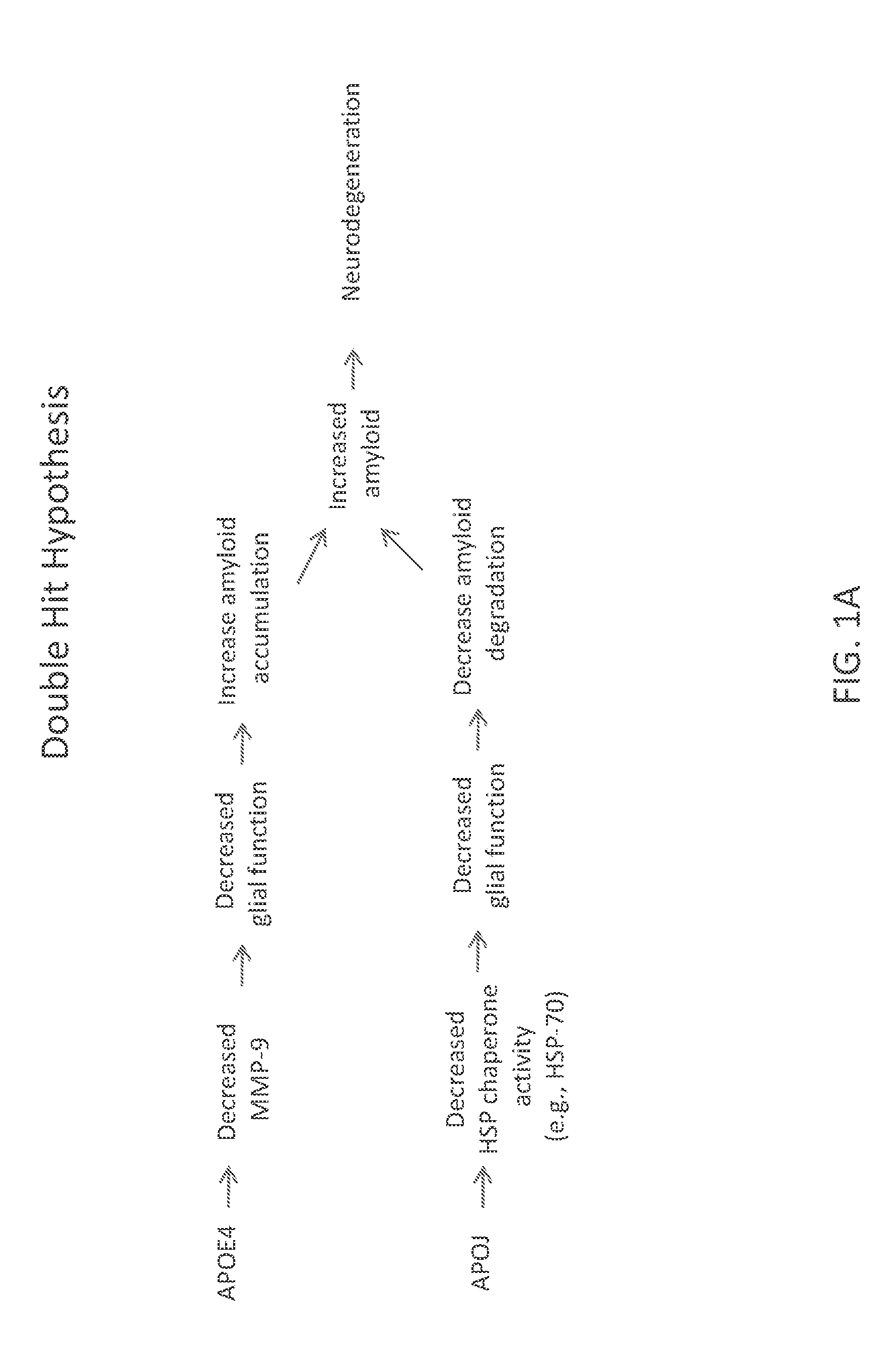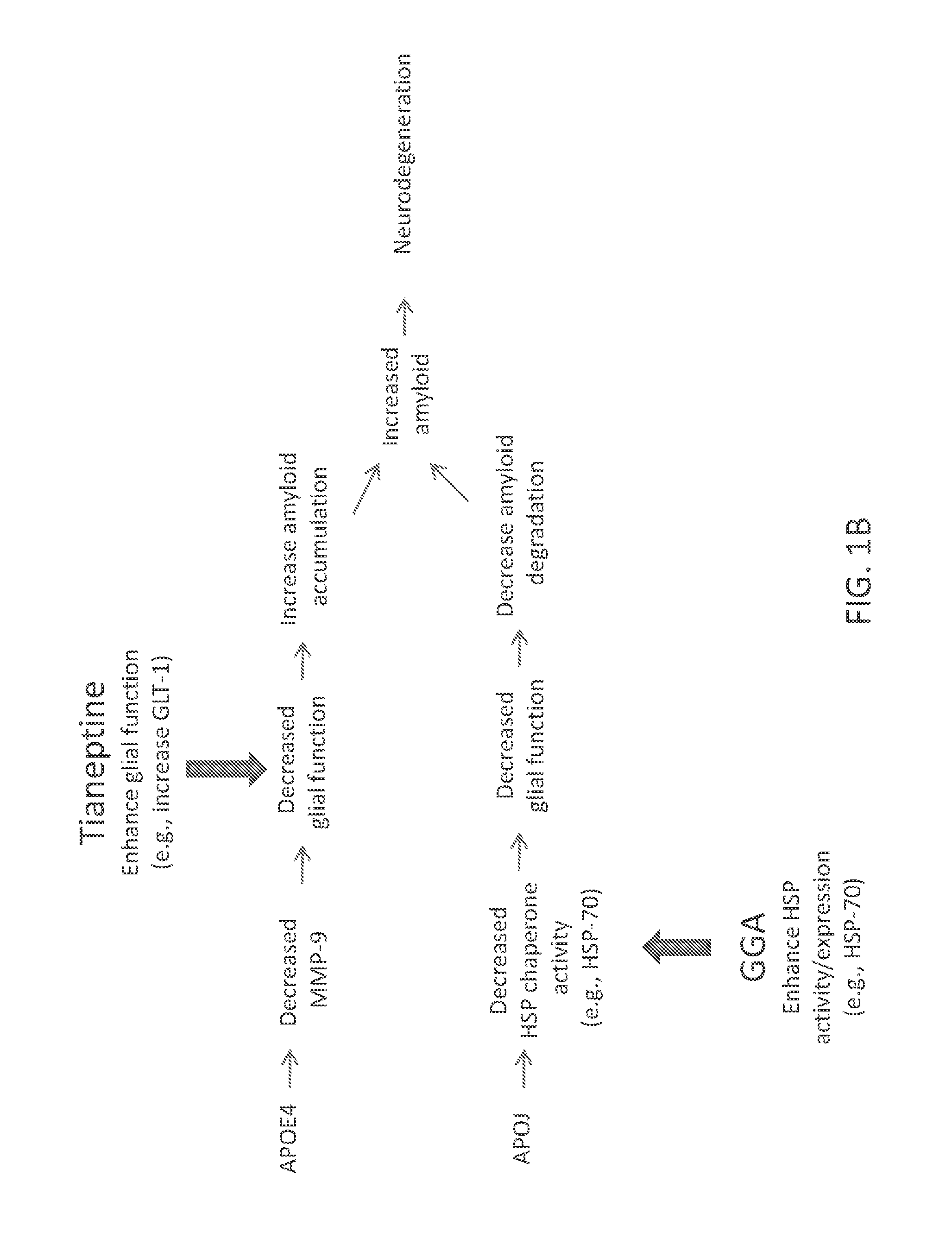Apoe4 and apoj biomarker-based prevention and treatment of dementia
a biomarker and dementia technology, applied in the field of apoe4 and apoj biomarker-based prevention and treatment of dementia, can solve the problems of difficult diagnosis of alzheimer's disease, inability to predict that an asymptomatic subject is at risk of developing the disease, and the importance of therapeutic intervention aimed at either finding a cure or preventing disease progression cannot be overstated. , to achieve the effect of enhancing rather than inhibiting the pro-inflammatory pathways,
- Summary
- Abstract
- Description
- Claims
- Application Information
AI Technical Summary
Benefits of technology
Problems solved by technology
Method used
Image
Examples
examples
[0136]In use, the methods and systems described herein may include a procedure for first determining a subject's risk for developing dementia, and then prescribing and / or administering a composition (including one or more drugs) to prophylactically treat at-risk patients. The compositions may include one or more agents to enhance amyloid clearance (e.g., to increase HSP expression / activity) and / or one or more agents to enhance amyloid clearance (e.g., to modulate GLT-1 expression / activity).
[0137]The procedure for determining if a patient is at risk (or has an elevated level of risk) may include determining the patient's genetic risk factors, including the presence of one or more (or a combination of) genetic markers including single nucleotide polymorphisms (SNPs), particularly in the APOE and / or Clusterin genes. In addition or alternatively, the step of determining if a patient is at risk may include determining if the patient has an increase in amyloid plaque. For example, amyloid...
example
[0145]In one example, an individual visits his or her health care worker because of a concern related to risk of developing Alzheimer's disease. The subject may be asymptomatic (or preclinical) for Alzheimer's or dementia. Alternatively, the person may be symptomatic, displaying signs of cognitive dysfunction associated with dementia or depressive symptoms. In either case, the health care worker may obtain a sample of genetic material which is analyzed for the presence of polymorphisms in the clusterin and APOe gene. SNPs at the CLU (also known as APOJ) gene (e.g., rs11136000) have been associated with dementia. In some variations, the patient may be subjected to a diagnostic radiographic study such as described earlier which is able to detect abnormal protein in the brain, and / or abnormal activity of GLT-1.
[0146]If an increased risk is determined, the subject may be prescribed and / or treated with a specific therapeutic compound as described herein. For example, in some individuals,...
PUM
| Property | Measurement | Unit |
|---|---|---|
| magnetic fields | aaaaa | aaaaa |
| magnetic fields | aaaaa | aaaaa |
| chemical shift | aaaaa | aaaaa |
Abstract
Description
Claims
Application Information
 Login to View More
Login to View More - R&D
- Intellectual Property
- Life Sciences
- Materials
- Tech Scout
- Unparalleled Data Quality
- Higher Quality Content
- 60% Fewer Hallucinations
Browse by: Latest US Patents, China's latest patents, Technical Efficacy Thesaurus, Application Domain, Technology Topic, Popular Technical Reports.
© 2025 PatSnap. All rights reserved.Legal|Privacy policy|Modern Slavery Act Transparency Statement|Sitemap|About US| Contact US: help@patsnap.com



